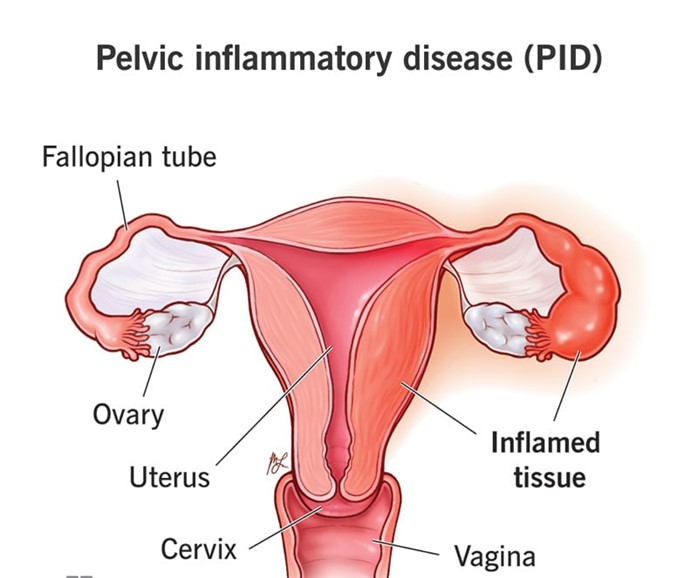A nurse is reinforcing teaching about self-care with a client who has pelvic inflammatory disease. The client does not speak English. Which of the following actions by the nurse is appropriate?
Ask the client's English-speaking family member to translate.
Use a translation dictionary to reinforce the teaching.
Seek assistance from a facility-approved interpreter.
Ask an assistive personnel (AP) who speaks the client's language to serve as an interpreter.
The Correct Answer is C
Choice A: Ask the client's English-speaking family member to translate. This action is not appropriate because it may compromise the accuracy and confidentiality of the information. The family member may not have sufficient medical knowledge or vocabulary to translate correctly or may omit or alter some details due to personal bias or embarrassment.
Choice B: Use a translation dictionary to reinforce the teaching. This action is not appropriate because it may be time-consuming and ineffective. The translation dictionary may not have all the relevant terms or phrases or may provide inaccurate or ambiguous translations. The nurse may also lose the client's attention or interest by relying on the dictionary.
Choice C: Seek assistance from a facility-approved interpreter. This action is appropriate because it ensures the quality and clarity of the communication. The facility-approved interpreter is a professional who has the skills and training to provide accurate and unbiased translation of the information. The interpreter can also facilitate the interaction and feedback between the nurse and the client.
Choice D: Ask an assistive personnel (AP) who speaks the client's language to serve as an interpreter. This action is not appropriate because it may violate the scope of practice and ethical standards of the AP. The AP may not have the qualifications or authority to provide interpretation services or may have a conflict of interest or role confusion with the client. The AP may also have other duties or responsibilities that may interfere with the interpretation process.

Nursing Test Bank
Naxlex Comprehensive Predictor Exams
Related Questions
Correct Answer is D
Explanation
Choice A: Growth spurt is not the correct answer because it is not the first event that occurs in female puberty. The growth spurt is a period of rapid increase in height and weight that usually occurs between 10 and 14 years of age in girls. It is influenced by various factors such as genetics, nutrition, and hormones. Growth spurt usually follows the development of breast buds and pubic hair by about 6 to 12 months.
Choice B: Evidence of pubic hair is not the correct answer because it is not the first event that occurs in female puberty. Evidence of pubic hair is the appearance of coarse, curly, and pigmented hair on the pubic area and around the genitals. It usually occurs between 8 and 13 years of age in girls. It is caused by the increased production of androgens (male hormones) by the adrenal glands and ovaries. Evidence of pubic hair usually follows the development of breast buds by about 3 to 6 months.
Choice C: Onset of menses is not the correct answer because it is not the first event that occurs in female puberty. The onset of menses is the beginning of menstrual cycles, which are regular changes in the female reproductive system that prepare the body for pregnancy. It usually occurs between 10 and 15 years of age in girls. It is caused by the maturation of the hypothalamus, pituitary gland, ovaries, and uterus, which regulate the levels of estrogen and progesterone (female hormones). The onset of menses usually follows the development of breast buds and pubic hair by about 2 to 3 years.
Choice D: Development of breast buds is the correct answer because it is the first event that occurs in female puberty. Development of breast buds is the enlargement and elevation of the nipples and areolas (dark circles around the nipples), which indicate the beginning of breast growth. It usually occurs between 8 and 12 years of age in girls. It is caused by the increased production of estrogen (female hormone) by the ovaries, which stimulates the growth of ducts (tubes) and lobules (glands) in the breast tissue. The development of breast buds is also called thelarche or breast stage 2.

Correct Answer is D
Explanation
Choice A: Menstrual is not the correct answer because it is the phase when estrogen levels are lowest. The menstrual phase occurs when the endometrium (the lining of the uterus) is shed along with blood and mucus through the vagina.
Choice B: Ischemic is not the correct answer because it is the phase when estrogen levels are decreasing. The ischemic phase occurs when the blood supply to the endometrium is reduced due to vasoconstriction (narrowing of blood vessels). This phase prepares the endometrium for shedding if fertilization does not occur.
Choice C: Secretory is not the correct answer because it is the phase when progesterone levels are highest. The secretory phase occurs when the endometrium becomes thick and spongy due to increased secretion of mucus and glycogen (a form of sugar). This phase provides a suitable environment for implantation if fertilization occurs.
Choice D: Proliferative is the correct answer because it is the phase when estrogen levels are highest. The proliferative phase occurs when the endometrium regenerates and grows due to increased stimulation by estrogen. This phase prepares the endometrium for implantation if fertilization occurs.

Whether you are a student looking to ace your exams or a practicing nurse seeking to enhance your expertise , our nursing education contents will empower you with the confidence and competence to make a difference in the lives of patients and become a respected leader in the healthcare field.
Visit Naxlex, invest in your future and unlock endless possibilities with our unparalleled nursing education contents today
Report Wrong Answer on the Current Question
Do you disagree with the answer? If yes, what is your expected answer? Explain.
Kindly be descriptive with the issue you are facing.
